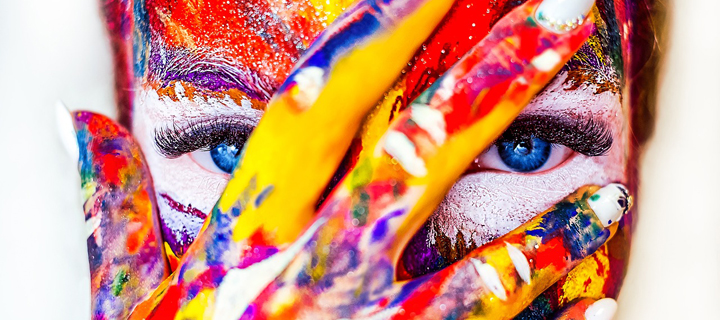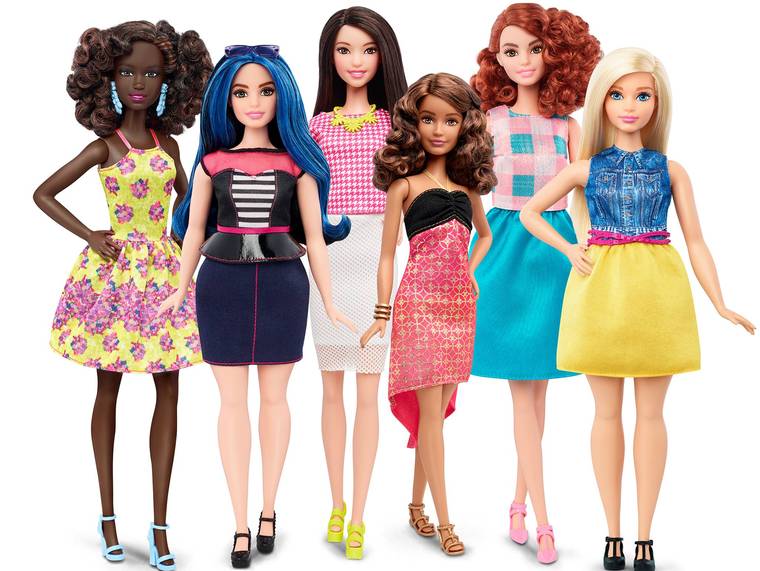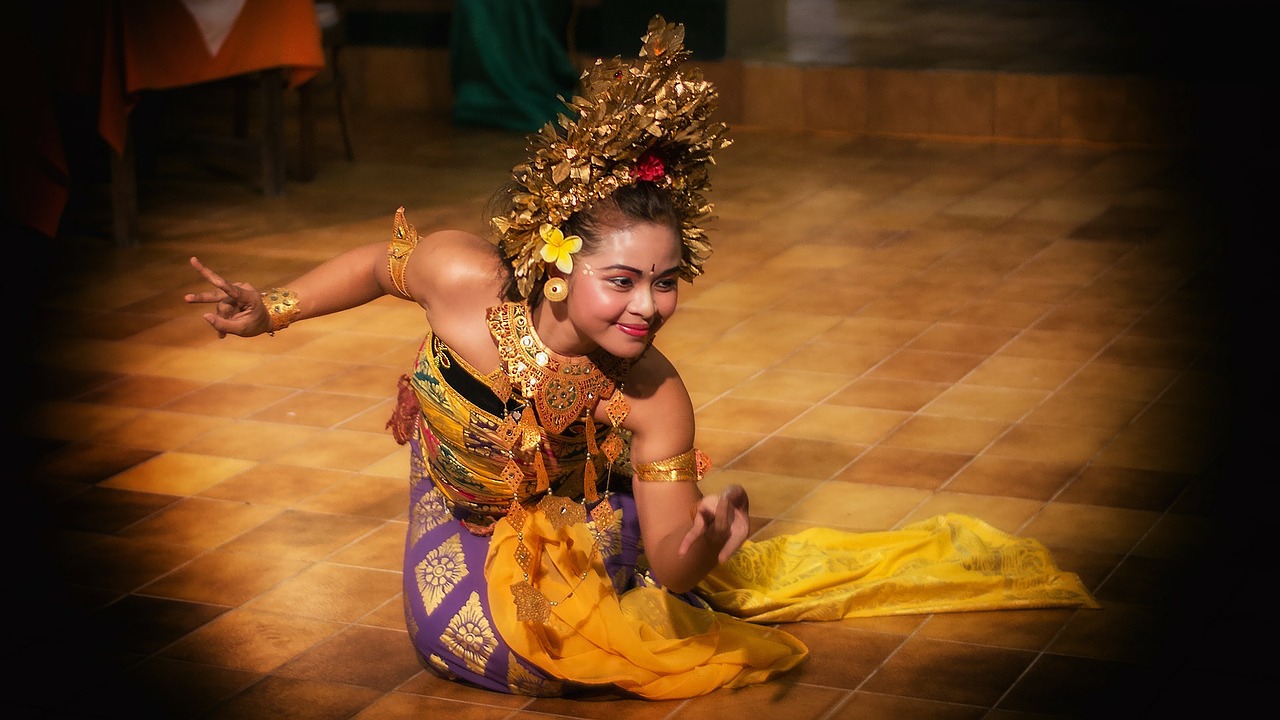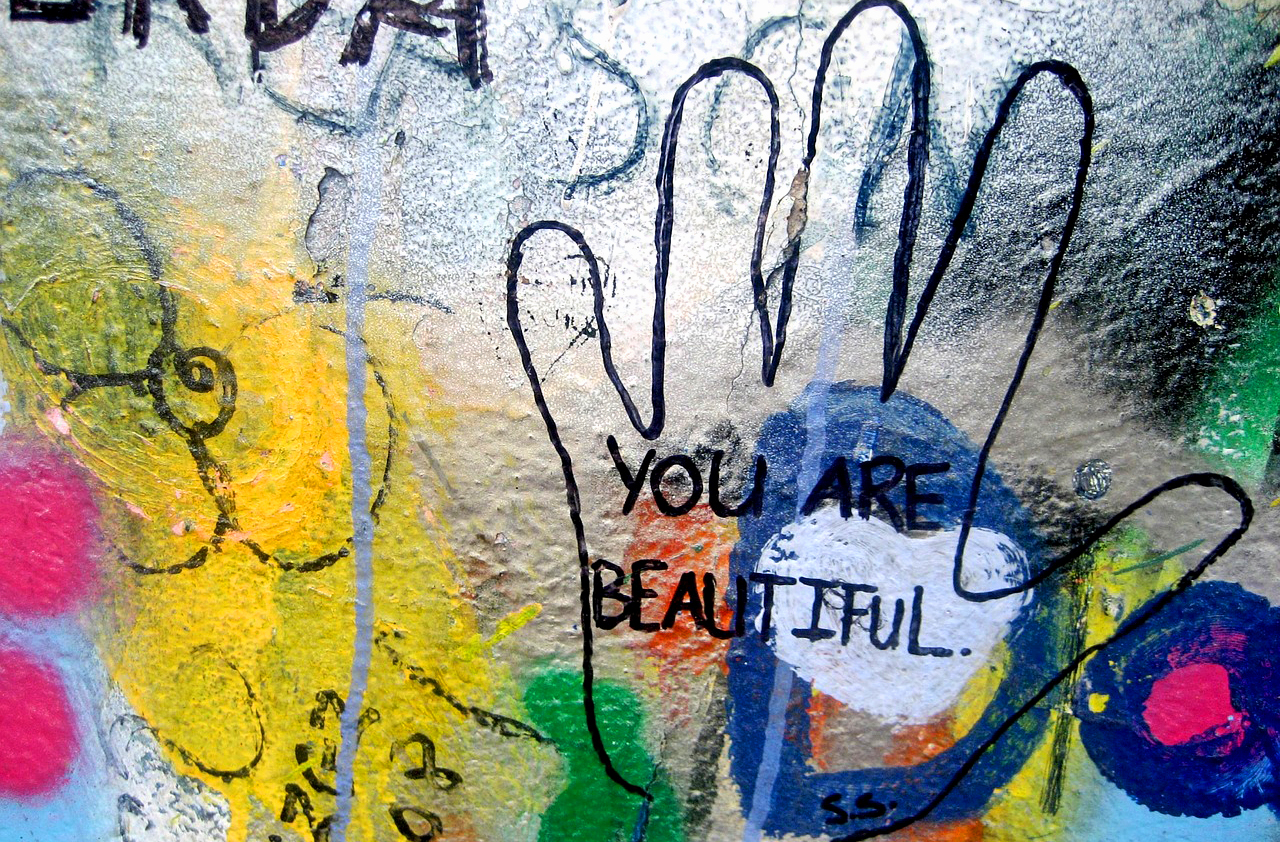By Francine Barone

Based on interviews of 10,500 women – including 5,165 girls aged 10 to 17 – in 13 countries worldwide The Dove Global Beauty and Confidence Report (2017) investigates the current state of female body confidence (Dove 2018). The report worryingly concludes that falling female body confidence has become a “critical issue” around the world, and points to pressure from the media – especially social media – as a major source of blame (Truong 2017; Moss 2016). Out of the 13 countries in the study, Japan ranked lowest, with only 8% body confidence among respondents, followed by the UK and Canada at 20%, the US at 24%, and South Africa topping the list at a modest 64% of women who feel confident in their bodies (ibid).
For many, figures like these are unsurprising in 2018. This is partially due to the growing “body positivity movement” has been spreading throughout the internet, social media, and popular culture in recent years precisely to counteract poor body image (across all ages and genders). Broadly, body positivity asserts that “all bodies are good bodies”. In other words, simply how you look on the outside does not – or should not – determine your worth as a human being. In Western society, this idea fights against long held valuations of physical appearance, primarily as portrayed (or conspicuously not portrayed) in the media. Body positivity proponents across social media therefore seek to make diverse body types more visible, partly as a reminder to rethink our cultural conceptions of what it means to be beautiful, and that such concepts are not fixed.
Such campaigns might feature plus-size women as fashion models; celebrities without makeup; or forgo airbrushing away “imperfections” like cellulite or stretch marks, all to challenge the beauty ideals and norms that we take for granted. Advertising is one of the salient ways to measure shifts in consumer expectations. Conventionally tall, thin, lean and light-skinned bodies have long held pride of place in fashion. When popular brands rethink their marketing strategies to feature “average” people, like when Mattel released a new range of Barbie dolls in different body types (Abrams 2016), these constitute steps towards a very public renegotiating and re-framing of what beauty is or can be, conventional or otherwise.

New line up of Barbie dolls. Photo: Mattel
By protesting predominantly thin, fair-skinned, and airbrushed depictions of beauty in popular media, body-positive campaigners hope to encourage (especially young) people not to aspire to unattainable “perfect” features and to embrace their “flaws”. The results of the Dove report indicate that there is still a long way to go.
It is easy to attribute these issues as stemming from a distinctly American or Western preoccupation with superficiality. However, the Dove report brings to light that body negativity is more of a global pandemic. Not only is female confidence steadily declining in the face of wider awareness of the same issues, “low body esteem [is] becoming a unifying challenge shared by women and girls around the world – regardless of age or geography” (Dove 2018).
The long- and short-term effects of these negative self-emotions are far from superficial. A majority of young female respondents admitted to avoiding friends, joining in social activities, and not eating when feeling negative about their body image. It is also worthwhile to add that although the report focuses on women, it is becoming increasingly recognized that low self-esteem and poor body image among men is also a struggle fueled by media representation and cultural norms (Lovejoy 2016).
The tangle of ideas of the right and wrong way to portray “beauty”, and especially that poor body image crosses genders and countries, brings up a fascinating anthropological challenge. Is beauty “culturally relative” or are there universally acknowledged traits? What is beautiful to one person or recognized as beautiful within a society or culture may not hold true for others, yet are some traits preferred over others throughout the world? Today, it is easy to blame advertising and social media for the spread of “unrealistic” body norms and pressures. But is this all really new?
In this remainder of this post, we’ll look at examples of anthropological findings on perceptions of beauty throughout different time periods and ethnographic locales to learn more about body image around the world.
Beauty, the self, and the other
Ethnographic descriptions of preferred traits seem to mimic the popular media in predominantly focusing the weight, shape, and stature of the female form. However, there is still much variation between desirable and undesirable features. Furthermore, these ideas can change over time, as will be seen below. What makes a society desire a certain body type or appearance over another is a perfect topic for cross-cultural research and one that is ideally suited to uncover rich examples from within eHRAF World Cultures. Let’s see what ethnographic data we can find.
Covarrubias (1938: 139-140) details the ideal beauty features expressed in Bali:
To the Balinese, the average features of Nordics are not to be admired; sharp noses, prominent chins, white skin, blue eyes, blond hair, and so forth are distasteful to them. Only dogs, monkeys, and evil characters have long, prominent teeth and hair over their bodies. For the Balinese taste, the skin should be smooth, clear, [and the hair] thick, black, and glossy; goddesses are represented with hair down to their knees. The complexion should not be too dark and a girl with a golden skin is considered beautiful even if other requirements are missing. The face should be round, the eyes bright and almond-shaped, but not too large, while the mouth must not be too small, with full arched lips and short even teeth. [The forehead] must be high and narrow, in a deep arch coming down to the temples. Moles and beauty spots are admired […] Perfume, either in the form of aromatic oil or as fresh flowers, is necessary to enhance one’s attractiveness … The body should be small but well proportioned, the hips and waist narrow, and the breasts round and full; a woman should never be too fat nor too thin.

Balinese woman
That is certainly a lot for women to embody. Yet when it comes to men, Covarrubias has far fewer details to work with: “Women are less particular about their men and the rules are not so well defined; vitality, strength, a well-proportioned body, and a smooth skin devoid of hair are the physical requirements of a man in a woman’s eyes” (1938: 140).
Another assumption that Western media often makes is that Western society is especially more obsessed with minute details of female appearance over that of males, and that this contributes to trickle-down effects on young girls like we see in the Dove Body Confidence Report. Data from ethnographic accounts from eHRAF appear to indicate that on the whole, there are typically many more provisions and conditions on female beauty than on male beauty wherever you look. However, men are not absent from beauty expectations. Most often these focus on body shape and outward manifestations of strength.
For instance, in rural Amhara society and culture around the 1950s in the Gonder District of Ethiopia, the “ideal feminine body is a fairly short, hippy woman with highbridged nose and bulging eyes”, while male beauty is encapsulated in a long, lean face and a large forehead. In addition, “The seat of strength in a man is not identified with the biceps as in the Western stereotype, but is believed located in the knee” (Messing, et al. 1985: 285).

Men are not free from body expectations; typically focusing on physical strength.
Ethnographic data on male bodies is somewhat less readily available. In colonial-era ethnographic accounts of beauty, it is significant that details about desirable physical appearance were often relayed by male authors. This fact makes such accounts doubly telling: sometimes reflections by outside observers can tell us as much about the time, place, and cultural upbringing of the ethnographer as they do the actual field location. One such example found in eHRAF comes from the notes of former colonial minister in Tonga, Sir Basil Thomson, on life in Tonga around 1900 (Thompson 1902). When visited by two nieces of a friend, Thomson notices some body-conscious behavior when the girls posed for a photo.
“They were nothing loath”, Thompson begins,
but the elder sister stipulated for the loan of a silk handkerchief to hide her neck. As she had the ordinary English neck of not ungraceful outline, and her sister, who had no neck to speak of, showed none of this bashfulness, our curiosity was aroused. It was thus that we discovered the Tongan ideal of female loveliness. The perfect woman must be fat—that is most imperative—her neck must be short (like the younger sister’s); she must have no waist, and if Nature has cursed her with that defect she must disguise it with draperies, or submit to be “miscalled” in the streets of Nukualofa; her bust and hips and thighs must be colossal […] There chanced to be an illustrated paper on the table, and when we showed them the wasp-waisted ladies in the fashion plates they chuckled with amusement and derision (1902: 203-204).
Afterwards, the colonial minister ruminates on an explanation for these Tongan values:
In days gone by the chief women got more to eat than their inferiors, and embonpoint became a chiefly attribute. This mark of high birth being once stereotyped, men chose their wives accordingly, and the Tongan dames will grow stouter with every generation. It is not a pleasing prospect (ibid. 204).
This account illustrates two key points. Firstly, the analysis is imbued with Western (and male) bias. Secondly, it reinforces the common interpretation that weight, wealth, and food scarcity are correlated in small-scale societies, i.e. that obesity is a sign of affluence and therefore desirable. In a cross-cultural study, Ember, et al. (2005) actually found a negative correlation between the valuation of fatness in women and different types of resource scarcity across many non-western and pre-industrial societies.
A contemporaneous example of expectations of beauty from yet another colonial account, this time of the Maasai (Merker 1910: 165-166) presents a case which likewise does not follow the same pattern:
For judging the beauty of the human body the people in general apply the same principles as the European does. The Masai idea of beauty calls for a well-built, slender body with slightly rounded forms. In contrast to most other black peoples, among whom corpulence is taken as the measuring stick for feminine [beauty], a Masai beauty may not be heavy.
Tip: You can search for these and more examples of how beauty and attractiveness are conceptualized in societies across the world in our eHRAF World Cultures database.
Try including OCM identifier 517 to refine your search for “aesthetic ideals and principles” relating to beauty.
Beautiful then and now
All societies have traits that are valued as attractive or unattractive. But how can perceptions and expectations of beauty change, sometimes drastically, over time? Ember, et al. suggest that “in the United States, shifts towards valuing thinness versus fatness seem to have coincided with the rise of women’s movements in the 1920s and late 1960s” (2005: 266). The Dove report indicates that pressures to maintain a healthy figure and stereo-typically attractive appearance are increasing exponentially especially under the social media spotlight. What ethnographic evidence do we have of changing beauty ideals and habits over time? Is the crisis indicated by the Dove report really anything new?

To take another an example from eHRAF World Cultures, Kanaaneh reflects on changing commodified standards of beauty among Palestinian women in contemporary Israel, where clothes, makeup, hairstyle fashions may go in and out of style over the years, but it seems “thinness” has become a more permanent requirement (2002: 171):
This modern ideal of beauty starkly contrasts with Palestinian ideals of only a couple of decades ago. When I met Sunbul, the lab technician from Kufur Yasif […] she had had her stomach surgically stapled for two months and lost a quarter of her body weight. She could only drink fluids, and was planning to continue this drastic diet for several more months, until she returned to her prechildbirth weight. She reflected: “Before, people used to like fat women; they’d say, ‘She’s beautiful, she’s all wrapped around [malfufi laf].’ Today it’s the opposite: they like women whose bones are sticking out.
The idea that “the ‘tyranny of slenderness’ has been making inroads into Galilee” is not surprising, nor is the contention that “hyperthin bodies and hyperconsumption are ‘very much linked in advanced capitalist economies that depend upon commodity excess.’” (ibid.) Yet our earlier colonial era examples from well before the advent of social media show that a preoccupation with body forms, particularly the female body, are not entirely new, and will continue to adapt to trends. How bodies are portrayed in the ethnographic record is therefore also likely to change over time.
What is left to question is whether the trending body positivity movement in 2018 will constitute a strong enough cultural shift worldwide to significantly change the way that people are valued based on physical appearance. Is body criticism simply a human universal that is impossible to avoid?

San woman
Perhaps one of the most inspiring examples for women struggling with body image comes from the San people of Botswana. Relayed through the story of Nisa, a Dobe area woman in her 50s, Shostak (1981: 270) presents a refreshing perspective on embodiment and gender empowerment in Botswana:
The self-possession !Kung women gain in childhood and young adulthood continues throughout life. In contrast to the experience of many women in our own culture, this feeling is not worn down by cultural ideals of “perfect” beauty to which women are constantly comparing themselves. Differences in innate physical attractiveness are generally recognized by the !Kung, and some individuals are acknowledged as being particularly good-looking or beautiful, but the culture does not elaborate much on these differences. The opportunity to make oneself attractive is available to everyone: one simply dons one’s best clothes—a traditional leather kaross with beaded designs or, more recently, a brightly colored cloth dress—after washing and oiling one’s face and body and applying cosmetics made from wild plants. Except for those who are sick, “too thin” or very old, most women think of themselves as attractive. The phrase most often heard to describe their sense of self-esteem can be translated as “I have work,” “I am productive,” or even, “I have worth.”
Ethnographic evidence suggests that while being critical of our bodies and appearance may very well be a human universal, the finer details of what makes a person attractive – and how to recognize beauty in oneself and others – is up for negotiation.

References
Abrams, R. 2016. Barbie Adds Curvy and Tall to Body Shapes. [online] The New York Times. Available at: https://www.nytimes.com/2016/01/29/business/barbie-now-in-more-shapes.html [Accessed 25 Jul. 2018].
Covarrubias, M. 1938. “Island Of Bali.” New York: Alfred A. Knopf. http://ehrafworldcultures.yale.edu/document?id=of07-002.
Dove. 2018. New Dove Research Finds Beauty Pressures Up, and Women and Girls Calling for Change. [online] Prnewswire.com. Available at: https://www.prnewswire.com/news-releases/new-dove-research-finds-beauty-pressures-up-and-women-and-girls-calling-for-change-583743391.html [Accessed 25 Jul. 2018].
Ember, C. R., et al. 2005. Valuing thinness or fatness in women. Evolution and Human Behavior 26(3): 257 – 270
Kanaaneh, R. 2002. “Birthing The Nation: Strategies Of Palestinian Women In Israel.” California Series In Public Anthropology. Berkeley: University of California Press. http://ehrafworldcultures.yale.edu/document?id=m013-037.
Lovejoy, J. 2016. Body Image Issues Are Not Just For Women [online] Huffington Post. Available at: https://www.huffingtonpost.com/jessica-lovejoy/body-image-issues-are-not-just-for-women_b_5034285.html [Accessed 25 Jul. 2018].
Merker, Meritz. 1910. “Masai: Ethnographic Monograph Of An East African Semite People.” Berlin: Dietrich Reimer (Ernst Vohsen). http://ehrafworldcultures.yale.edu/document?id=fl12-018.
Messing, Simon D., and M. Lionel (Marvin Lionel) Bender. 1985. “Highland Plateau Amhara Of Ethiopia.” Ethnography Series. New Haven, Conn.: Human Relations Area Files. http://ehrafworldcultures.yale.edu/document?id=mp05-020.
Moss, R. 2016. Women’s Body Confidence Is A ‘Critical Issue’ Worldwide, Warns Dove’s Largest Ever Report. [online] Huffington Post UK. Available at: https://www.huffingtonpost.co.uk/entry/dove-global-body-image-report_uk_5762a6a1e4b0681487dcc470 [Accessed 25 Jul. 2018].
Shostak, M. 1981. “Nisa, The Life And Words Of A !Kung Woman.” Cambridge, Mass.: Harvard University Press. http://ehrafworldcultures.yale.edu/document?id=fx10-026.
Thomson Sir, B. 1902. “Savage Island: An Account Of A Sojourn In Niué And Tonga.” London: J. Murray. http://ehrafworldcultures.yale.edu/document?id=ou09-015.
Truong, K. (2017). Here’s Why Poor Body Image is Bad For Your Health [online] Refinery 29. Available at: https://www.refinery29.uk/2017/10/175549/bad-body-image-health-effects [Accessed 25 Jul. 2018].